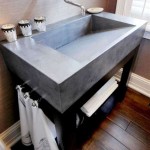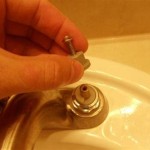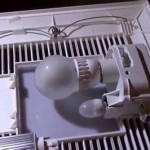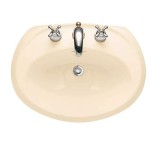How to Change Bathroom Ceiling Spotlights: A Comprehensive Guide to Wall-Controlled Fixtures
Changing bathroom ceiling spotlights, especially those controlled by a wall switch, requires careful planning and execution. Safety is paramount when working with electrical fixtures and circuits, so it is imperative to adhere to all relevant regulations and guidelines. This article provides a detailed guide on how to safely and effectively replace bathroom ceiling spotlights, focusing on fixtures operated by a wall switch.
Before commencing any work, it is crucial to understand the existing lighting system. This includes identifying the type of spotlights, the wiring configuration, and the control mechanism. Understanding these elements will streamline the replacement process and help avoid potential problems. Furthermore, familiarity with basic electrical safety protocols is essential for preventing accidents.
The following sections outline the steps involved in changing bathroom ceiling spotlights controlled by a wall switch, emphasizing safety precautions and best practices.
1. Preparing for the Replacement Process
Prior to initiating any electrical work, the first and most critical step is to disconnect the power supply to the circuit. Locating the circuit breaker that controls the bathroom lighting and switching it off is mandatory. To ensure complete safety, use a voltage tester to confirm that the circuit is indeed de-energized. Touching the tester to the wires after the breaker has been switched off should not register any voltage. This verification is vital to prevent electrical shock.
Gathering all necessary tools and materials represents the next preparatory action. These typically include: replacement spotlights, a screwdriver set (including both Phillips head and flathead), wire strippers, wire connectors (such as wire nuts or push-in connectors), electrical tape, a ladder or step stool, safety glasses, and gloves. Having all these items readily available will expedite the process and minimize interruptions.
Inspect the replacement spotlights to ensure they are compatible with the existing fixture and the bathroom environment. Consider factors such as the wattage rating, the type of bulb (LED, halogen, etc.), and the ingress protection (IP) rating. Bathrooms, being damp environments, often require spotlights with a higher IP rating to protect against moisture ingress. Specifically, consider spotlights with an IP44 rating or higher for areas directly above showers or bathtubs.
Documenting the existing wiring configuration is highly recommended. Before disconnecting any wires, take photographs or draw a diagram showing how the wires are connected to the old spotlight. This visual reference will be invaluable during the re-installation process, preventing miswiring and ensuring proper functionality of the new spotlight. Pay close attention to the color coding of the wires (typically black for live, white for neutral, and green or bare copper for ground) and how they are connected to the terminals of the old fixture.
Finally, carefully inspect the ceiling around the spotlight for any signs of damage, such as cracks or water stains. If any damage is present, address it before installing the new spotlight. Water damage, in particular, can pose a significant electrical hazard and should be rectified immediately.
2. Removing the Old Spotlight Fixture
With the power safely disconnected and the preparations complete, the next step involves removing the old spotlight fixture. Start by carefully removing the bulb from the old spotlight. Depending on the type of bulb and fixture, this may involve twisting, pulling, or unscrewing the bulb.
Next, locate the retaining clips or screws that hold the spotlight fixture in place. These clips or screws may be visible on the surface of the fixture, or they may be hidden behind a bezel or cover. Carefully remove the retaining clips or screws, taking care not to damage the surrounding ceiling. If the fixture is held in place by spring clips, gently push them inwards to release the fixture from the ceiling.
Once the fixture is detached from the ceiling, carefully pull it down, exposing the wiring connections. Disconnect the wires one at a time, using wire strippers to expose fresh wire if necessary. Use wire connectors to cap off the ends of the disconnected wires momentarily, ensuring that bare wires do not touch each other or any metallic surfaces.
Before completely removing the old fixture, carefully inspect the wiring to ensure that it is in good condition. Look for any signs of damage, such as frayed or cracked insulation. If any damage is present, repair or replace the wiring as needed. Discard the old spotlight fixture according to local regulations.
After removing the old fixture, inspect the junction box in the ceiling for any debris or damage. Clean the junction box thoroughly and ensure that it is securely mounted to the ceiling joist. If the junction box is damaged, replace it with a new one before installing the new spotlight fixture.
3. Installing the New Spotlight Fixture and Wiring
With the old spotlight fixture removed and the junction box prepared, the next step is to install the new spotlight fixture. Begin by carefully reading the manufacturer's instructions for the new fixture. These instructions will provide specific details on how to install the fixture and connect the wiring.
Connect the wiring of the new spotlight fixture to the existing wiring in the junction box, following the wiring diagram that was created during the preparation phase. Typically, the black (live) wire from the fixture is connected to the black wire in the junction box, the white (neutral) wire from the fixture is connected to the white wire in the junction box, and the green or bare copper (ground) wire from the fixture is connected to the green or bare copper wire in the junction box.
Use wire connectors to securely connect the wires together. Ensure that the wire connectors are properly sized for the gauge of the wire being used. After connecting the wires, wrap them with electrical tape for added insulation and security. Tuck the wires neatly into the junction box, ensuring that they are not pinched or strained.
Carefully position the new spotlight fixture into the ceiling opening and secure it using the retaining clips or screws. Ensure that the fixture is flush with the ceiling and that there are no gaps or openings around the edges. If the fixture is held in place by spring clips, gently push them inwards to secure the fixture to the ceiling.
Install the bulb into the new spotlight fixture, following the manufacturer's instructions. Ensure that the bulb is properly seated in the socket and that it is the correct wattage rating for the fixture. Replace any bezels or covers that were removed during the installation process.
4. Testing and Final Inspection
After installing the new spotlight fixture, the final step is to test its functionality and perform a final inspection. Before restoring power to the circuit, double-check all wiring connections to ensure that they are secure and properly insulated.
Restore power to the circuit by switching the circuit breaker back on. Immediately observe the new spotlight fixture to ensure that it is functioning correctly. The light should turn on and off smoothly when the wall switch is operated.
Check for any flickering or buzzing sounds coming from the fixture. If any abnormalities are detected, immediately switch off the circuit breaker and investigate the problem. It is possible that a wiring connection is loose or that the bulb is not properly seated in the socket. If the issue persists, consult a qualified electrician.
Inspect the surrounding ceiling area for any signs of heat or smoke. If any heat or smoke is detected, immediately switch off the circuit breaker and investigate the problem. A potential cause could be an overloaded circuit or a faulty wiring connection. Address the issue immediately to avoid a fire hazard.
Once testing is complete and the spotlight fixture is functioning correctly, conduct a final visual inspection to ensure that the fixture is securely mounted and that there are no loose wires or exposed terminals. Clean any debris or fingerprints from the fixture and the surrounding ceiling area.
In conclusion, changing bathroom ceiling spotlights controlled by a wall switch involves careful planning, preparation, and execution. Adhering to safety precautions, following the steps outlined in this guide, and consulting a qualified electrician when necessary is essential for ensuring a safe and successful replacement project.

How To Get The Lighting Right Bathroom Mad About House

How To Get The Lighting Right Bathroom Mad About House

The Essential Guide To Bathroom Led Lighting Super Bright Leds

How To Get The Lighting Right Bathroom Mad About House

Four Brilliant Ways To Use Recessed Lighting In Your Bathroom Ideas Advice Lamps Plus

How To Get The Perfect Spa Bathroom Lighting Darklight Design Supply

How To Get The Perfect Spa Bathroom Lighting Darklight Design Supply

Bathroom Lighting

Bathroom Lighting Philips

Difference Between Downlights Spotlights Value Lights
Related Posts







